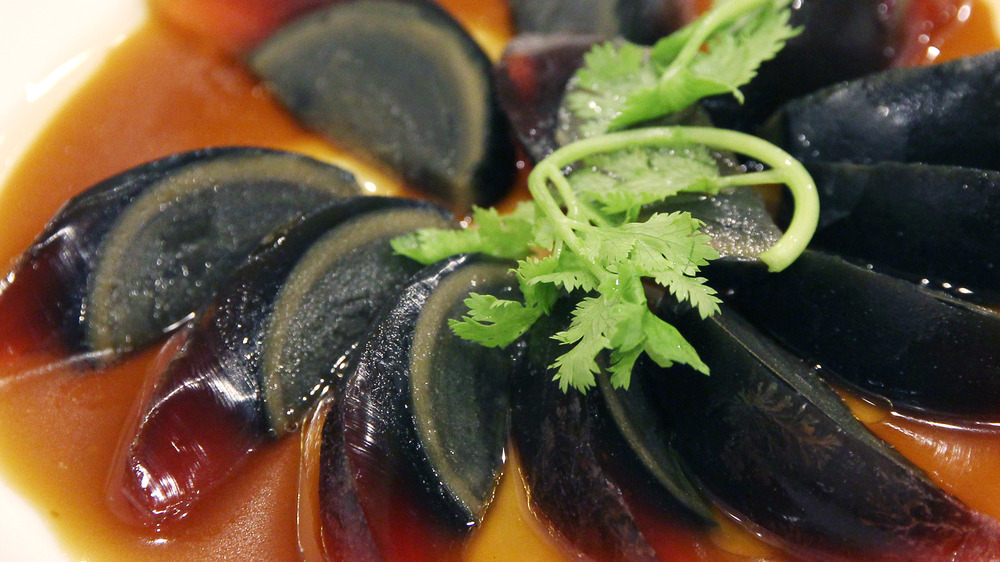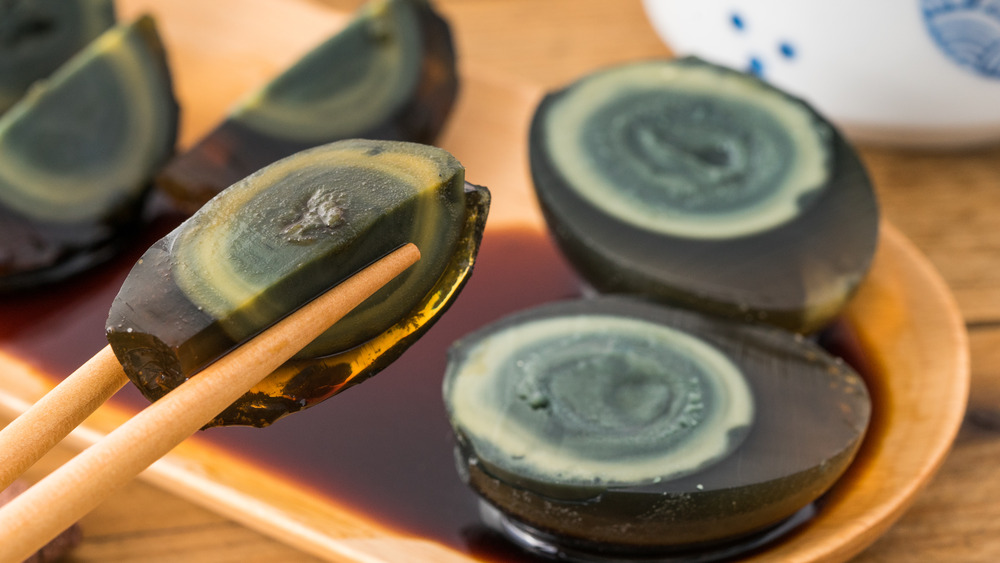This Is The Best Way To Eat A Century Egg
It would be a stretch to consider century eggs as blank canvases in the way their whiter, brighter siblings could be. That's because century eggs are distinctive. Time spent lolling about in a mixture of clay, ash, salt, quicklime, and water (via Atlas Obscura) have changed the characteristics of a basic egg, so that what should be an opaque white exterior is instead a deep, dark jelly. In place of a sunny yellow yolk, diners either get a solid grey yolk or a rather gooey one, much like a chicken egg that has been cooked for about 4 to 5 minutes. Take a bite and you'll discover that a century egg's gelatinous exterior doesn't have much flavor to it, but its yolk is as creamy as it looks, with a pervasive smell that carries a hint of ammonia (via The Takeout). The egg of any fowl can be turned into century eggs, from duck to chicken and quail.
To some people, century eggs may be an acquired taste, but if and when you do fall in love with them, they can be enjoyed in different ways.
The best way to prepare century eggs
Diners linger over small dishes of century egg at the beginning of a Chinese banquet, when they are sliced up lengthwise and served with thin slivers of pickled ginger. They can be heaped on top of a warm, comforting bowl of congee or rice porridge, along with pork, fish, or tofu and crisp, cut-up fried dough sticks. They can be finely chopped, mixed with spring onions, and then laid on top of silken tofu, before the concoction is bathed with a sauce made with light soy, black vinegar, and sesame oil, presenting a play on flavors (via The Takeout).
But the best way to prepare century eggs is to prepare them kung pao style, where slices of century egg turn what we know as a traditional chicken dish into an umami-filled ovo-vegetarian's dream. One recipe available on YouTube might be in Mandarin but comes with clear English subtitles. It lists century eggs, dried chili, garlic, Sichuan pepper, roasted peanuts, tapioca starch (think corn starch, but made with tapioca instead), a scallion or green onion, water, soy sauce, white pepper powder, sugar, ketchup, vinegar, sesame oil, and Chinese cooking wine for ingredients; and the bulk of these are used to make the sauce, which is poured onto the eggs as they cook. When served with a bowl of rice or congee, kung pao century eggs are as sublime as it gets.

